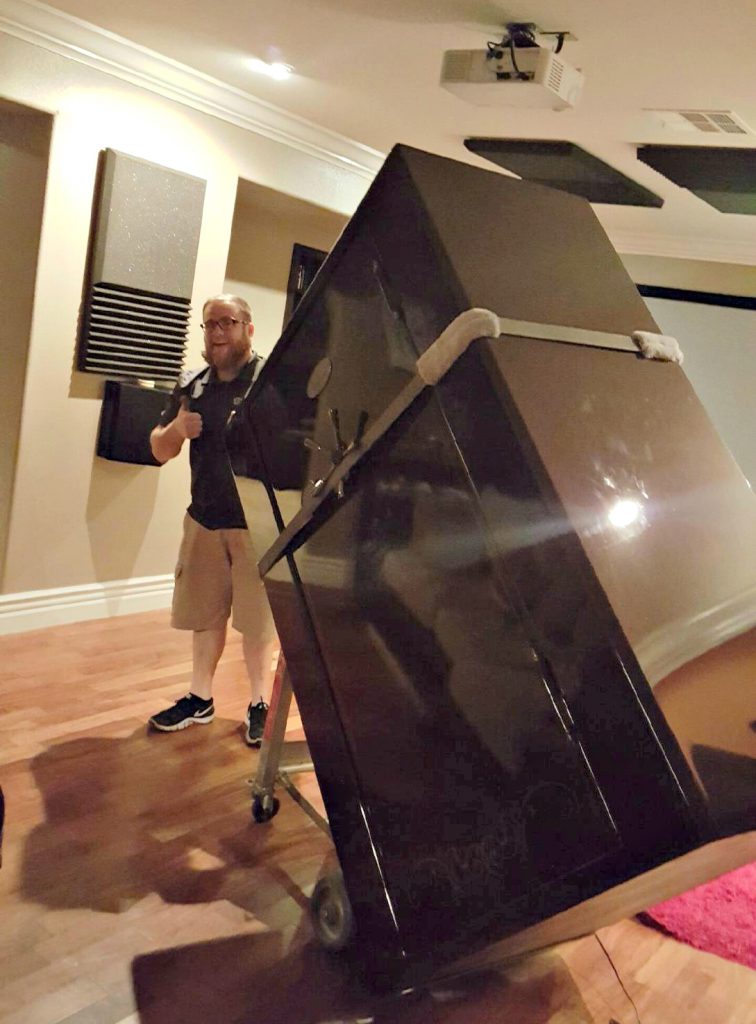If you own a home safe, then sooner or later it’s likely that you’ll end up having to move it from its current spot to another room within the same house or apartment, or even move it to another residence altogether during a residential move. When that time comes, you’ll be faced with a real challenge and plenty of important decisions to make. Here is some information you may find helpful in moving any kind of safe you may have.
Quick Guide on How to Move a Safe
Safes are specifically designed to be difficult to remove from a home or moved from one location to another to prevent thieves and burglars from simply stealing the entire safe with its contents. The daunting task of removing and transporting large, heavy-duty safes is what provides additional security to your most valuable belongings.
Preparing your safe to be moved
Before you begin the actual moving of the safe, there are a few things you should do in preparation:
- Empty the safe of all of its contents. Besides adding extra weight, items stored in moving safes could get damaged due to unusual transportation maneuvers the safe could be subjected to. If your safe is going to be moved by a professional safe-moving dolly like the Ultra Lift, then it will be tilted at a 45° angle. When you are maneuvering a safe down stairs, around corners, or onto trucks, there is likely going to be a lot of jostling that will disturb the contents inside. As such, its a good idea to wrap a thick moving blanket around the metal structure of your safe and tape it securely to prevent any damage in the process.
- Pack these items separately, in a safe place, during the move. Items kept in safes are more than likely very valuable, so it would be wise to store them somewhere else safe during the move.
- Removing all items from the safe will make it easier to move. An empty safe is lighter and much easier to maneuver. This, of course, depends on what you keep in your safe. If the safe contains items such as jewelry and valuable trinkets, then removing its contents does little to the weight. Large heavy-duty gun safes, however, are considerably easier to move when their contents are removed.
- Make sure safe is not bolted to the ground. Most safe companies will bolt down your safe as part of it’s installation. The easiest way to find out if your safe is bolted down would be to open its door and pull down on it, making sure nobody is standing next to you or the safe. If the safe tilts in your direction, it is not bolted. Make sure to carefully and slowly release pressure on the door when you are done.

Browning safe, Fort Knox safe, Champion safe, Superior safe, gun safe, gun safe moving
Moving a gun or antique safe from your home safely
Once you’ve emptied the safe of its contents and are ready to move it, there are some things you’re going to need to make the move possible:
- A heavy-duty appliance dolly, one that’s made for large-scale appliances like refrigerators, washers and dryers, and of course safes.
- Moving straps, to keep the safe steady and in place while you move it.
- A few strong people to help you on moving day. Under no circumstances should you ever attempt to move a large safe on your own. Try to have at least five or six of your strongest friends, family members or neighbors present to help you out with the safe. Without proper assistance you’re risking damage to your property, as well as serious injury.
- Take every precaution necessary. In addition to making sure you have enough people on hand to assist, you should also make sure that you have all of the proper equipment that you need to move the safe. Without the proper equipment, you can be risking serious injury or damage to your property.
Moving a large, heavy item like a safe requires a lot of caution and a lot of patience. Here are some tips on how to successfully get it out of your home and onto the moving truck:
- Tilt the safe to one side and slide the dolly underneath the bottom of the safe so that the entire unit is resting against dolly.
- Take the strap and wrap it completely around the safe, making sure to wrap it as tightly as possible. Tie the strap down so that it securely fastened and can keep the safe attached to the dolly at all times.
- Once the dolly is completely under the safe and the safe is secured to the dolly with the load strap, tilt the dolly back onto its wheels so that the entire weight of the safe is being supported on the wheels of the dolly. You will likely need multiple people to help carefully tilt the heavy safe into this position.
- When moving the safe on the dolly, you should have at least three people holding up the safe to keep it steady and secure. Even with the load strap holding the safe to the dolly, it is extremely heavy and any sudden movements, turns or bumps can dislodge the safe from the dolly.
- You should have at least three people at either end of the safe, guiding it and supporting it while you move it up or down the stairs.
- Once you’ve gotten the safe onto the truck, tilt it back so that the dolly is resting flat on the floor. Have a few people behind the safe holding it and easing it back towards the ground slowly and carefully.
- When the safe is lying on flat ground, remove the load strap that is holding it in place and tied to the dolly, and then carefully slide the dolly out from under the safe.
If you lack experience in handling overweight safes or you feel rather nervous about the whole idea of moving your safe by yourself, do the right thing and contact reputable safe movers in your area. Don’t get tempted to move a safe with golf balls, steel pipes or even glass beads as that can lead to serious injury for your or your trusted helpers. Look for experienced movers who have been in the moving business at least a few years. Contact SafesPro at (408)-887-1248 to make your moving easier and safer.

